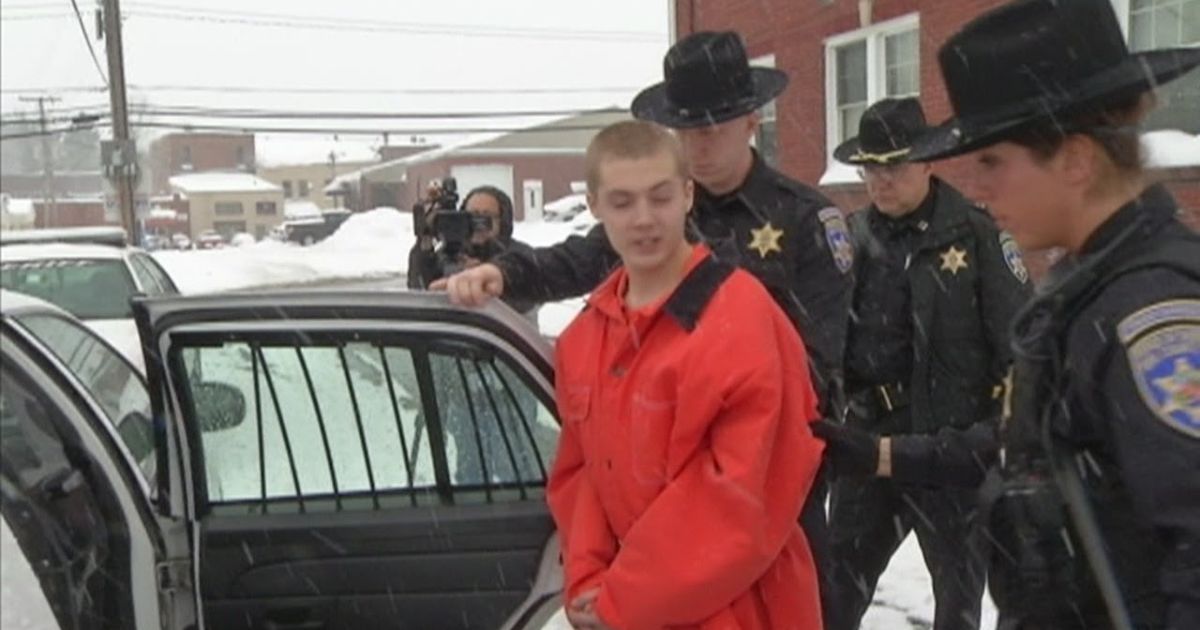The chilling tale of Dylan Schumaker and the brutal murder of 23-month-old Austin Smith haunts our collective consciousness. This narrative goes beyond headlines, aiming to illuminate the intricacies surrounding this heart-wrenching tragedy and its far-reaching implications.
A Night of Tragedy
On that fateful evening, the ordinary turned to horror. Entrusted to the care of 16-year-old Dylan Schumaker, Austin’s cries became the catalyst for an unimaginable act. Reports suggest that Schumaker, overwhelmed by the toddler’s incessant wails, unleashed a brutal attack. The senselessness of the act reverberated through the community, sparking a nationwide outcry for justice.
The Aftermath and Arrest
As the lifeless form of Austin lay, Schumaker’s 911 call became a harbinger of tragedy. Emergency responders arrived swiftly, but their efforts were in vain. The severity of the injuries hinted at a deliberate act, leading to Schumaker’s arrest. The subsequent interrogation began the unraveling of the grim truth behind the toddler’s death, setting the stage for a prolonged legal saga.
Public Outcry and Trial Commencement
News of Schumaker’s arrest sent shockwaves, invoking disbelief and anger. The legal system faced mounting pressure to deliver justice. As preparations for the trial unfolded, the extraordinary nature of the case became apparent. The prosecution insisted on trying Schumaker as an adult, underscoring the gravity of the crime.
Unraveling the Psyche of Dylan Schumaker
Central to the trial was the exploration of Dylan Schumaker’s psyche. Expert testimonies and psychological evaluations painted a nuanced picture. Described as emotionally unstable, Schumaker’s troubled upbringing took center stage. Testimonies highlighted potential neglect and abuse, attempting to provide context to a crime that defied understanding.
Key Facts
- Troubled Upbringing Schumaker’s tumultuous past marked by neglect.
- Emotional Instability Expert testimonies revealing an emotionally unstable profile.
- Past Traumas Attempts to attribute actions to a turbulent history.
Justice Served
The trial, a tapestry of emotion and meticulous argument, culminated in overwhelming evidence against Schumaker. The jury’s unwavering guilty verdict and the judge’s subsequent imposition of a life sentence without parole sent a resounding message. This wasn’t just about legal consequences; it was about society’s demand for justice, especially in cases involving the most vulnerable.
Community Healing and Legislative Impact
Austin’s death left an indelible mark on the community, prompting a collective need for healing. Leaders, activists, and authorities rallied to support the grieving family. The case prompted a reevaluation of legislative measures related to child abuse and domestic violence. It became a catalyst for stricter laws, emphasizing the imperative of protecting the most vulnerable members of society.
Legislative Changes
- Community Healing Efforts for collective healing and support for the grieving family.
- Stricter Laws Legislative changes addressing child abuse and domestic violence.
Reflections on the Legal System’s Approach
Dylan Schumaker’s case raised poignant questions about the legal system’s approach to juvenile offenders. Trying him as an adult ignited debates on the moral and ethical implications. It forced society to grapple with whether young offenders, still in their formative years and potentially open to rehabilitation, should face the same punitive measures as adults.
Ethical Debates
- Juvenile Offenders Questions surrounding trying them as adults.
- Moral Dilemmas Ethical implications of such legal decisions.
Understanding Violence in Youth
Schumaker’s violent outburst, though horrifying, brought attention to a broader issue – aggression and violence among the youth. Psychologically, it unveiled a culmination of factors a troubled home environment, exposure to violence, mental health issues, and even certain genetic predispositions. It emphasized the urgency for collaborative efforts among educational institutions, community centers, and healthcare providers to identify at-risk youth and provide essential support.
Contributing Factors
- Aggression Among Youth Broader examination of violent tendencies.
- Psychological Insights Factors contributing to violent outbursts.
The Media’s Role in Shaping Perceptions
Intense media coverage significantly influenced public perception. While serving the purpose of informing the public, it sparked debates on the sensationalization of crime and the ethics of broadcasting a trial involving a minor. The media’s role in such high-stakes situations must balance reporting facts with respecting the privacy of those involved, especially when children are affected.
Media Influence
- Sensationalization Debates Balancing facts and privacy in media coverage.
- Ethics in Reporting Debates on Broadcasting Trials Involving Minors.
Societal Measures for Child Safety
The tragedy underscored the critical importance of societal vigilance and robust measures to safeguard children. Communities and families must collaborate to create safe environments, emphasizing proper childcare and the severe consequences of neglect. Effective mechanisms to report and respond promptly to signs of child abuse or neglect are essential.
Safety Measures
- Societal Vigilance Importance of communities in child safety.
- Reporting Mechanisms Effective ways to respond to signs of child abuse.
Conclusion
The case of Dylan Schumaker stands as a poignant study of human psychology, neglect, and the latent potential for violence in youth. As Schumaker serves a life sentence behind bars, the echoes of this case remain a constant reminder of the work needed to protect innocent lives from the devastating impacts of unchecked aggression and violence.
Read More: Spin Win Daily – Sports Guru Pro Everyday Earning











